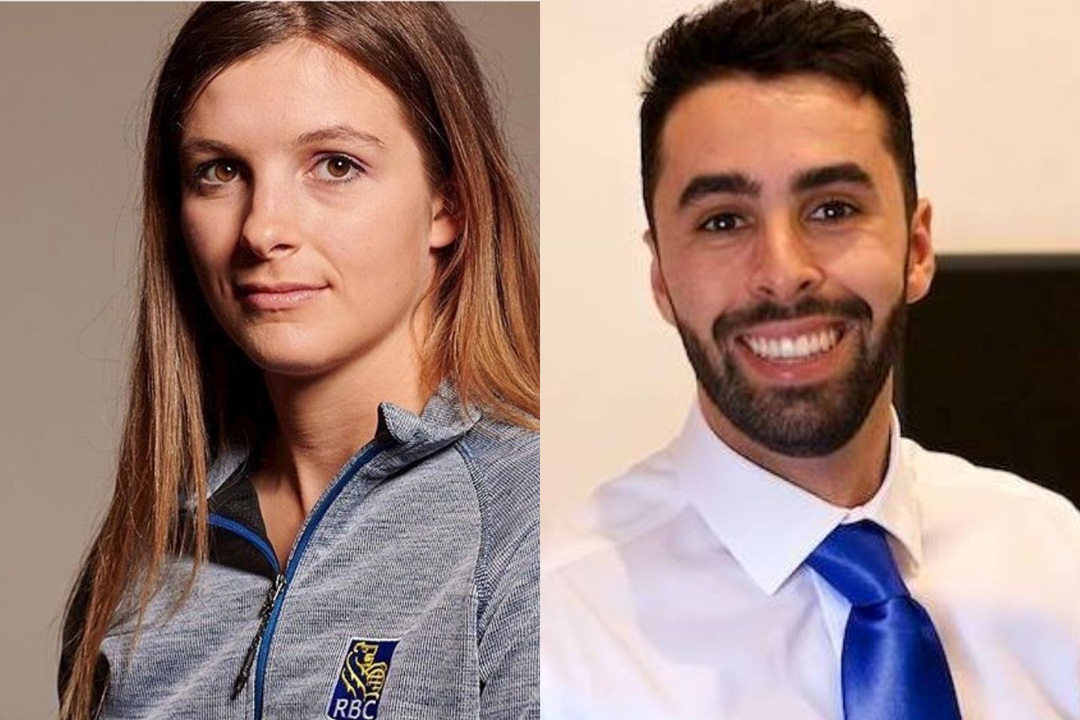
Health science researchers to receive Governor General’s Gold Medals at USask
Dr. Scott Dos Santos (PhD), whose health-focused doctoral studies were based at the Western College of Veterinary Medicine (WCVM), is one of two University of Saskatchewan (USask) graduate students to receive a Governor General’s Gold Medal — Canada’s most prestigious academic honour.
By Kassidy Guy | WCVM TodayThe Governor General’s Gold Medal is awarded annually to graduate students who display outstanding academic performance in their program. This year’s recipients from the College of Graduate and Postdoctoral Studies (CGPS) are Santos and Dr. Keely Shaw (PhD).
The 2024 Governor General’s Gold Medal recipients will be recognized on June 4 during “A Toast to USask Graduate Students,” an event hosted by the College of Graduate and Postdoctoral Studies. Learn more.
Dr. Scott Dos Santos (PhD)
Dos Santos is a postdoctoral fellow at the University of Western Ontario where his research work focuses on microbiomes.
Originally from England, Dos Santos completed his undergraduate degree in biomedical science at the University of Surrey. During his undergraduate program, Dos Santos studied abroad at USask and had the opportunity to work with Dr. Janet Hill (PhD), a professor and head of the WCVM’s Department of Veterinary Microbiology.
Dos Santos returned to the University of Surrey to complete his undergraduate degree and his Master of Medical Microbiology degree. In 2019, he returned to USask to pursue his doctoral studies with Hill serving as his graduate supervisor. His research focused on the impact of the maternal vaginal microbiome on infants’ gut bacteria.
“Around 2016, [clinicians] started seeing a lot of pregnant women asking about vaginal seeding,” says Dos Santos. “They were worried that if they delivered their baby by C-section (caesarean section), [the baby’s] gut microbiome would be altered which some studies have suggested is linked to asthma, type I diabetes and several other conditions.”
The concept of vaginal seeding first arose in 2015. It involves placing sterile gauze in a mother’s vagina before a caesarean procedure and swabbing the newborn with the secretions, with the goal of mimicking passage through the birth canal and exposure to specific bacteria.
Research conducted by Dos Santos and Hill has now revealed that this practice does not have much of a scientific basis, and in fact, the composition of the maternal vaginal microbiome didn’t have any obvious effect on the babies’ gut microbiomes. These findings will work to dispel common myths about caesarean sections and provide expectant parents with peace of mind.
According to Dos Santos, it takes a village to put together a project like this.
“We had a clinical team that was absolutely wonderful. The LEGACY project team, which is headed by Dr. Deb Money (University of British Colombia), is phenomenal,” said Dos Santos. “Janet and the rest of the Hill lab are all brilliant people, especially our lab manager, Champika Fernando — she was instrumental in training grad students across WCVM.”
Dr. Keely Shaw (PhD)
Dr. Keely Shaw (PhD) is a Paralympic bronze medallist and a postdoctoral fellow at the University of Calgary. Before continuing her studies in Alberta, Shaw earned her bachelor’s degree, master’s degree and doctorate program at USask.
Shaw’s doctoral research falls at the intersection of kinesiology, nutrition and agriculture.
While collaborating with researchers at the USask Crop Development Centre (CDC), Shaw’s research has focused on how a new breed of field peas may be used to develop a food-first approach to resolving iron deficiencies.
With iron deficiencies ranking as one of the most prevalent nutrient deficiencies worldwide, the need for adequate intervention is critical. A food-first method to treating iron deficiency relies on ingesting foods with high-nutrient availability, rather than relying on alternatives such as supplements.
“I’m an athlete myself, and I know supplements can be kind of ‘iffy’ from an iron perspective. They can be hard on your gut,” said Shaw. “Supplements always carry a risk for athletes who are subject to doping control.”
Throughout her research, Shaw focused on two groups affected by iron deficiencies: people with spinal cord injuries and female athletes.
“I really wanted to work with people with spinal cord injuries because we know so little about people with impairments,” said Shaw. “It’s only recently, particularly in the exercise science world, that we’ve moved away from studying only college-age males and started looking more at older individuals or females. But the work in people with physical impairments just isn’t there yet.”
As the global population continues to increase, Shaw hopes her research can aid in growing sustainable crops that meet the nutritional needs of the world. She also hopes that her work with people with impairments encourages more research on this underserved group.
“As somebody with a brain injury, there’s been no real guidance from practitioners. It’s really been through my own journey of trying to manage the symptoms that come with my chronic disability that have led me to be passionate about continuing to do that.”
Shaw gives credit to her supervisor and supervisory committee, including Dr. Phil Chilibeck (College of Kinesiology), Dr. Gordon Zello (College of Pharmacy and Nutrition), Dr. Tom Warkentin (College of Agriculture and Bioresources), Dr. Angela Baerwald (College of Medicine) and Dr. Carole Rogers (Ontario Tech University).
“They were all so great and accommodating,” says Shaw. “Having that support throughout my doctoral thesis was paramount to my success.”
